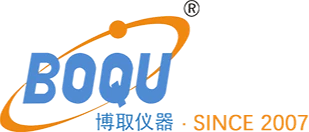Expert in Water Quality Measurement and Water Treatment Project Since 2007
The Advantages of Using Submersible Level Transmitters in Waste Water Treatment
Submersible level transmitters offer numerous advantages for the effective management of waste water treatment. Whether in municipal or industrial applications, these devices play a vital role in monitoring water levels, ensuring optimal process functionality, and promoting environmental sustainability. This article explores the benefits of using submersible level transmitters in waste water treatment, highlighting their applications and advancements in the field.
I. Introduction
A brief overview of waste water treatment challenges and the role of level transmitters.
II. Understanding Submersible Level Transmitters
A. What are submersible level transmitters?
B. How do they work?
C. Key components and design considerations.
III. Enhanced Accuracy and Reliability
Subheading: A Game-Changer in Level Monitoring
A. Precise measurement abilities.
B. Minimizing errors and inaccuracies.
C. Continuous monitoring for improved reliability.
IV. Versatility in Various Waste Water Treatment Processes
Subheading: Tailored Solutions for Diverse Applications
A. Collection and transportation.
B. Primary treatment stage.
C. Secondary treatment and aeration.
D. Tertiary treatment and effluent discharge.
E. Sludge dewatering and management.
V. Submersible Level Transmitters: A Cost-Effective Solution
Subheading: Maximizing Efficiency and Savings
A. Lower installation costs.
B. Reduced maintenance requirements.
C. Enhanced control and optimization.
D. Minimizing downtime and operational disruptions.
E. Longevity and durability.
VI. Overcoming Measurement Challenges in Waste Water Treatment
Subheading: Navigating Complex Conditions
A. Extreme temperature and pressure conditions.
B. Presence of corrosive and abrasive substances.
C. Turbulence and varying flow rates.
D. Managing foam, sediments, and suspended solids.
VII. Integration with SCADA Systems
Subheading: Streamlining Data Collection and Analysis
A. Benefits of integrating submersible level transmitters with SCADA systems.
B. Real-time data visualization and remote monitoring.
C. Automation and control capabilities.
D. Predictive analytics for proactive maintenance.
VIII. Cutting-Edge Advancements in Submersible Level Transmitters
Subheading: Innovations Revolutionizing the Industry
A. Wireless and IoT-enabled transmitters.
B. Self-calibrating and self-diagnosing capabilities.
C. Enhanced digital communication protocols.
D. Integration with AI and machine learning algorithms for predictive modeling.
IX. Environmental Benefits and Regulatory Compliance
Subheading: Safeguarding Water Resources
A. Early detection of leaks and spills.
B. Minimizing environmental impact.
C. Ensuring compliance with regulatory standards.
X. Conclusion
Summarizing the advantages of using submersible level transmitters in waste water treatment and their significance in achieving efficient, cost-effective, and environmentally responsible operations.
In conclusion, the implementation of submersible level transmitters in waste water treatment processes offers remarkable advantages, ranging from enhanced accuracy and reliability to cost-efficiency and environmental compliance. With constant advancements in technology, these devices continue to revolutionize the industry by facilitating streamlined monitoring, data analysis, and predictive maintenance strategies. By harnessing the potential of submersible level transmitters, waste water treatment facilities can optimize their processes, minimize downtime, and contribute to sustainable water resource management.
Contact Us
Office Add:No. 118 Xiuyan Road,Pudong New Area,Shanghai,Zip Code:201315,China
Contact us right away
BOQU Instrument focus on development and production of water quality analyzers and sensors, including water quality meter, dissolved oxygen meter, pH sensors, etc.
